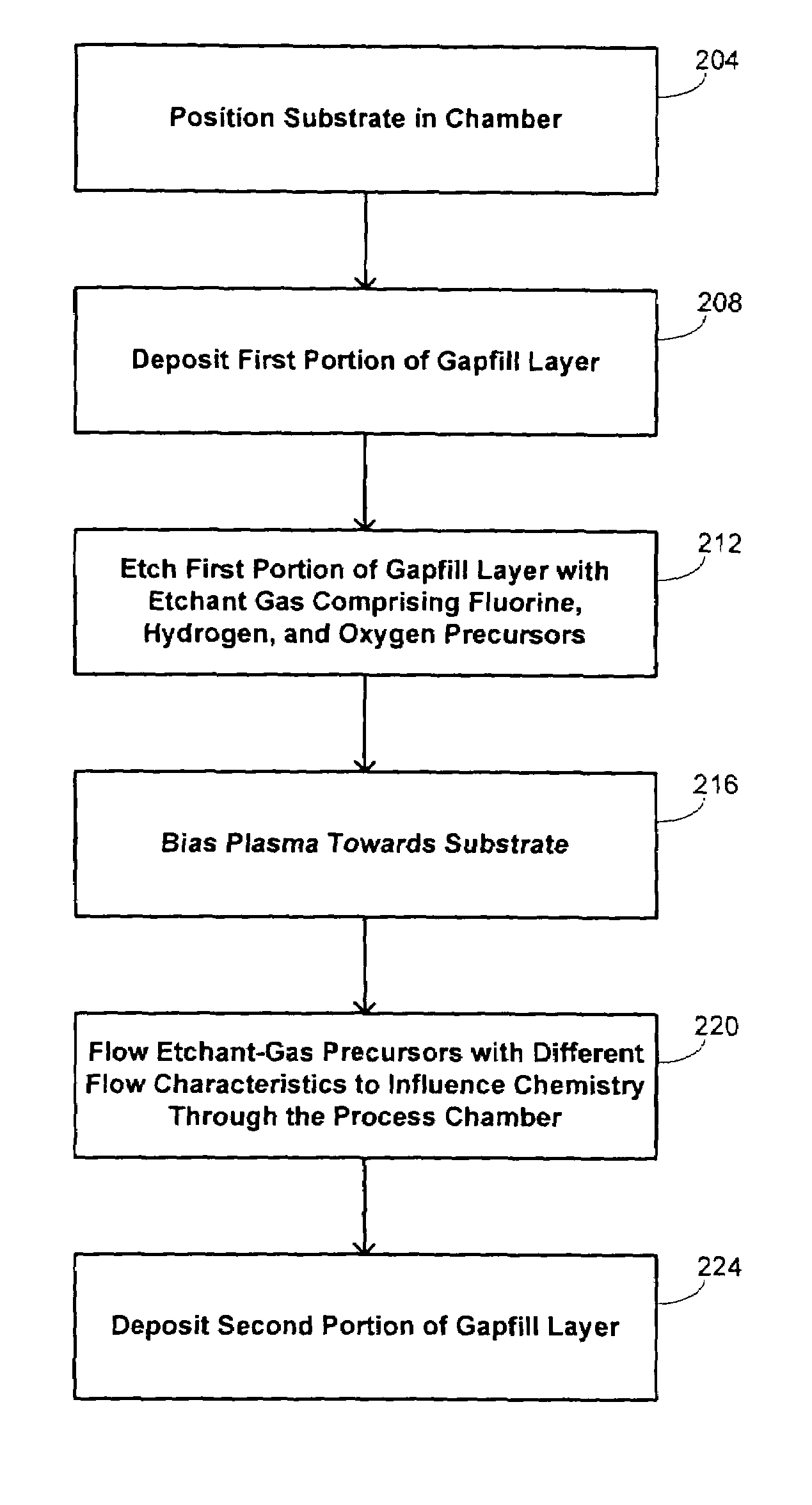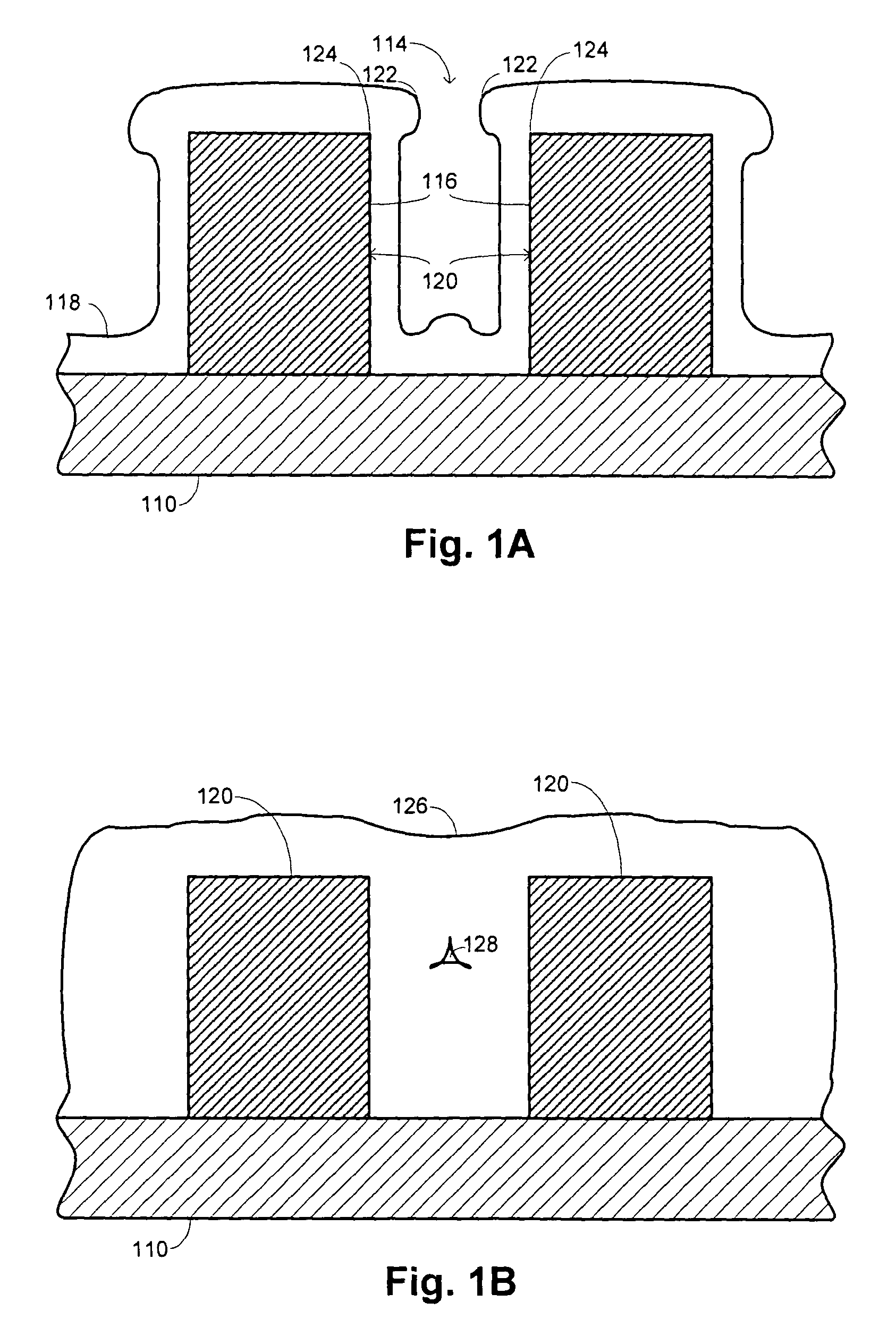Reactive ion etching for semiconductor device feature topography modification
a technology of reactive ions and semiconductor devices, applied in vacuum evaporation coatings, chemical vapor deposition coatings, coatings, etc., can solve the problems of increasing the aspect ratio, affecting the operation of the completed device, and progressively more difficult to fill gaps without leaving voids, etc., to achieve improved etch control, good overall gapfill capability, and precise control
- Summary
- Abstract
- Description
- Claims
- Application Information
AI Technical Summary
Benefits of technology
Problems solved by technology
Method used
Image
Examples
Embodiment Construction
1. Introduction
[0025]Embodiments of the invention are directed to methods and apparatus for depositing a film to fill a gap in a surface of a substrate with a multistep deposition and etching process. Films deposited according to the techniques of the invention have excellent gapfill capabilities and are able to fill high-aspect-ratio gaps encountered in, for example, shallow-trench-isolation (“STI”), intermetal-dielectric (“IMD”), and premetal-dielectric (“PMD”) structures, among others. Films deposited by the methods of the invention are suitable for use in the fabrication of a variety of integrated circuits, and are particularly useful in technology that uses minimum feature sizes of 0.06 μm or smaller.
[0026]The gapfill problem addressed by embodiments of the invention is illustrated schematically with the cross-sectional views shown in FIGS. 1A and 1B. FIG. 1A shows a vertical cross section of a substrate 110, such as may be provided with a semiconductor wafer, having a layer of...
PUM
| Property | Measurement | Unit |
|---|---|---|
| Volumetric flow rate | aaaaa | aaaaa |
| Volumetric flow rate | aaaaa | aaaaa |
| Volumetric flow rate | aaaaa | aaaaa |
Abstract
Description
Claims
Application Information
 Login to View More
Login to View More - R&D
- Intellectual Property
- Life Sciences
- Materials
- Tech Scout
- Unparalleled Data Quality
- Higher Quality Content
- 60% Fewer Hallucinations
Browse by: Latest US Patents, China's latest patents, Technical Efficacy Thesaurus, Application Domain, Technology Topic, Popular Technical Reports.
© 2025 PatSnap. All rights reserved.Legal|Privacy policy|Modern Slavery Act Transparency Statement|Sitemap|About US| Contact US: help@patsnap.com



